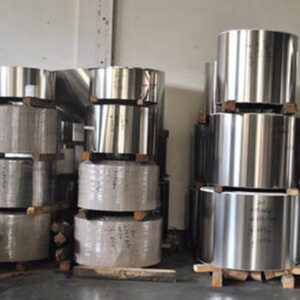
Introduction
The CK55 spring steel strip is a high-quality carbon steel known for its excellent hardness and strength. Its adaptability to cold rolling processes makes it an ideal material for manufacturing various types of springs used across industries. Understanding the intricacies of the cold rolling process for CK55 is crucial for factories aiming to produce durable and efficient springs. In this article, we delve into the steps involved in cold rolling CK55 spring steel strips and highlight the benefits it brings to spring manufacturing.
The Basics of CK55 Spring Steel Strip
Composition and Properties
CK55 is a medium-carbon steel with a carbon content of approximately 0.55%. This composition grants it a balance between strength and flexibility, making it suitable for forming into spring steel strips. Its properties include:
- High Tensile Strength: Provides resistance to deformation.
- Good Elasticity: Allows the material to return to its original shape after bending.
- Excellent Hardness: Enhances durability and wear resistance.
Applications in Spring Manufacturing
Due to its properties, CK55 is extensively used in producing various springs such as:
- Compression Springs: For absorbing shock.
- Extension Springs: For providing resistance to pulling forces.
- Torsion Springs: For storing and releasing rotational energy.
The Cold Rolling Process Explained
Overview of Cold Rolling
Cold rolling is a metalworking process conducted at or near room temperature. It enhances the steel’s mechanical properties and surface finish. For CK55 spring steel strips, cold rolling is essential to achieve the desired thickness and mechanical characteristics required for spring fabrication.
Step-by-Step Cold Rolling of CK55
1. Preparation of the Steel Strip
Before rolling, the CK55 steel strip undergoes:
- Cleaning: Removing impurities and scale from the surface.
- Annealing: Softening the steel for better workability.
2. Rolling Process
The actual rolling involves:
- Passing the Strip Through Rollers: Reducing thickness gradually.
- Multiple Passes: Achieving precise dimensions.
- Monitoring Temperature: Ensuring no heat treatment occurs that could alter properties.
3. Finishing Operations
Post-rolling steps include:
- Trimming Edges: Making sure the strip width is uniform.
- Applying Surface Treatments: Enhancing corrosion resistance if necessary.
- Quality Inspection: Checking for defects and ensuring compliance with specifications.
Benefits of Cold Rolling CK55
Enhanced Mechanical Properties
Cold rolling improves:
- Strength and Hardness: Making the steel more resistant to deformation.
- Surface Finish: Providing a smoother surface that is ideal for further processing.
Dimensional Accuracy
The process allows for:
- Tight Tolerances: Essential for components where precision is critical.
- Uniform Thickness: Ensuring consistent performance in springs.
Considerations for Manufacturers
Equipment Requirements
1. Rolling Mills
Manufacturers need:
- High-Precision Rolling Mills: Capable of handling CK55 steel.
- Control Systems: For precise adjustments during rolling.
2. Quality Control Instruments
Essential for:
- Measuring Thickness: Using micrometers and gauges.
- Surface Inspection: Detecting any irregularities or defects.
Handling and Safety
Material Handling
- Proper Storage: To prevent contamination or damage.
- Safe Transportation: Using appropriate equipment to move heavy coils.
Safety Protocols
- Protective Gear: For operators handling the process.
- Training: Ensuring staff are knowledgeable about operating machinery safely.
Conclusion
Understanding the cold rolling process of CK55 spring steel strip is fundamental for factories engaged in spring manufacturing. This process not only enhances the steel’s mechanical properties but also ensures that the final product meets the stringent demands of various applications. By investing in the right equipment and adhering to meticulous processing steps, manufacturers can produce high-quality springs that stand the test of time.
